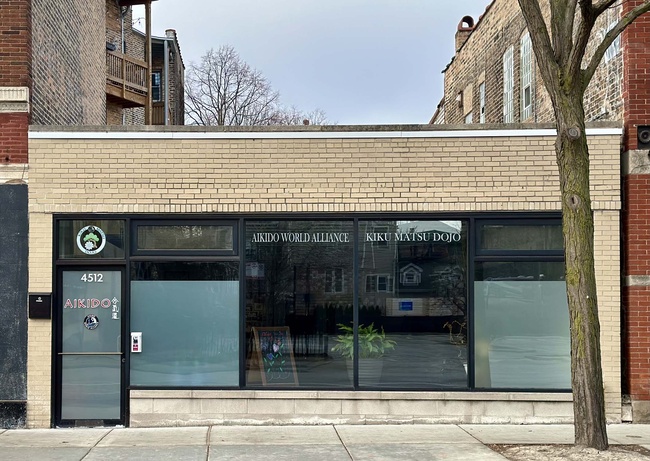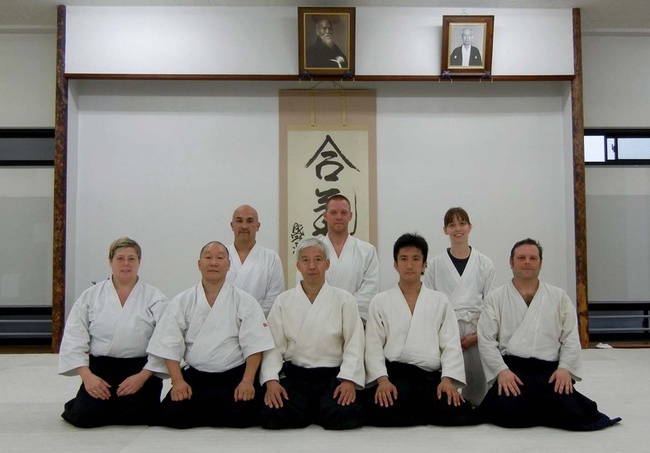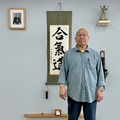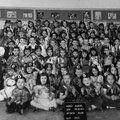From the 1960s through the 1990s, the Lakeview neighborhood was colloquially known as Chicago’s unofficial Japantown, a community of noticeable JA residential and commercial presence, a destination for WWII-era resettled families that had not returned to the West Coast. The Japanese Culture Center sat in the heart of this community, with over a dozen Japanese businesses lining Belmont from the 800-1000 blocks, another couple dozen or so up and down nearby Clark Street and Sheffield Avenue from Belmont to Wrigley Field. Sato himself had grown up in Lakeview, on Burling Street just north of Diversey.
“Back then if you wanted Japanese foods, there were Toguri’s on Belmont and Star Market on Clark Street. For a short time, there was Diamond Trading, part of Toguri’s, just west of Ann Sather’s on Belmont. The biggest thing for me were the social dances held at a place called Viking Hall. It’s located on the Southeast corner of Sheffield and School Streets. The place had a second-floor dance hall complete with a stage. Many Sansei bands were developing and at least once a month someone, or the JA churches and temples, would organize dances. It brought out JAs from all over the Chicago area and suburbs, a great place for learning social skills as a young man or woman.
“I grew up hearing Japanese all the time. My grandparents were from Japan and my parents were fluent. They could be having a conversation in English, all of a sudden switch to Japanese, and back and forth. When they didn’t want you to understand anything, they’d talk in all Japanese. When I got into the culture heavily, I’d ask all the Issei to talk to me in Japanese.
“I started volunteering at the JASC (Japanese American Service Committee) for meals-on-wheels, driving meals to the retired Issei. And then they said there’s an opening full-time, and I jumped on it because it was an opportunity to be immersed in Japanese culture. They had a sheltered workshop for outpatient schizophrenics and retired Issei who still had such a strong work ethic, so I was hired to help in the warehouse.
“I was like their grandkid, because a lot of Sansei weren’t interested in understanding their grandparents, the Issei. I learned Japanese there . . . in a sense. It was pre-war Japanese, it hadn’t advanced into modern Japanese, but either way it was a good start for me. My grandmother worked there, so I got to be close to her.”
Serendipitously, Sato also met his future wife during his time at JASC, with whom he’s celebrated over forty years of marriage and raised two grown children. “I met a co-worker, Robyn Esaki, a Sansei who grew up in Andersonville (a North Side Chicago neighborhood). We married in 1983. You would think a new love, a new marriage, might slow down training? Not for me. While like many of the local Sansei Robyn was not as Japan crazy as me, she was close. Lucky for me, my mother-in-law was giving Robyn many lessons on Japan. Her mother was Kibei-Nisei, born in the United States but educated in Japan.”
Through Robyn’s father, Sato was introduced to the U.S. division president of the Japan-based manufacturer Kimoto Tech. “Her father thought, ‘Ah, my future son-in-law is in social work and not making any money,’” recalls Sato with a grin. “So he introduced me. I met them for an interview and went to work the next week, basically. All the top management were from Japan. The owner’s son was brought over to manage our branch, so I was the guy who was trying to be the oil between him and Western culture. And at night, I’d go to the dojo.
“It was a suit and tie, five days a week. They expected long hours, but I worked it out with them that if I came in two hours early every day, I’d leave an hour early just so I could get all the way across town from Elk Grove to Belmont and Sheffield for training (a little over an hour’s drive). They were very supportive, surprisingly.”
In 2001, Fumio Toyoda passed away.
“He had gone overseas,” says Sato, with a quiet resilience. “He was sick, he had been struggling with a lot of physical problems. They airlifted him back and he never came out of the coma. I was there when the Toyoda family made the decision to take Sensei off of life support.
“His wife took over and she was not into aikido, so she asked me to be the chief instructor.” At that point, Sato resigned his position at Kimoto Tech—which he’d held for nearly twenty years—and became a full-time aikido teacher. “When I told the company I wanted to pursue aikido full-time, they were a little concerned but gave me their blessing. They even invited me back, but I declined.
“I became chief instructor for AAA and AAI, and from 2001 to 2004 it was really hard, we were struggling. I think there were some power issues going on. Toyoda sensei’s wife wanted her son to take over, so at the end of 2004 my position was eliminated.
“In 2005, I was just going to train somewhere else, be a student, I was tired of politics basically. But some students called me and said, ‘We’re leaving, we’re going with you.’ And other dojo-cho called me and said let’s start something. So it was not my intention but by Spring, 2005, Aikido World Alliance was formed.
“Yoshimitsu Yamada, who was head of the largest aikido group in the U.S., the United States Aikido Federation, he helped us get recognition—konin—from honbu dojo in Japan, which is pretty hard to get. He didn’t ask our organization to join his, but asked that we work together and show the world that aikido people can get along. I said, ‘I’m your man.’ Yamada sensei actually became my teacher after Toyoda sensei passed away. I was kind of rudderless, so I asked him to be my teacher. He was one of the last standing uchideshi of Osensei, and he passed away just last year.”
Sato rented a storefront at 4512 N. Lincoln, a former warehouse for a neighboring hardware and tool repair shop. Kiku Matsu Dojo opened its doors as the headquarters of the AWA, an organization of some 50 dojo and 1,700 students worldwide.

“Kiku Matsu, the name of the dojo, is my grandmothers’ first names,” Sato explains. “Kiku Sato and Matsu Kitamura. They were my first teachers, in a sense. For instance, I wanted to learn how to make maki sushi. So I begged my grandmother. She said no. I said, ‘C’mon!’ No. Finally, after a couple months of asking, she says, ‘Okay, show up at 8 o’clock. Don’t be late.’ I show up at 8:01. ‘Go home.’ C’mon! ‘Go home.’ I had to wait another two months!
“In a sense, that’s how I learned what a teacher is. They have to be unyielding at some level, to keep that art form or tradition as pure as possible. Because it changes. We all say our kids are weak, right? Our parents said we were weak. It may be some idealized thought, but I think there’s some truth to that. If you pamper them, you’re not helping them. It’s a cold world.”
Although still chief instructor of the association, Sato has long since passed the day-to-day operations of Kiku Matsu Dojo to his longtime student, Laura DeGraff. “She’s been my student forever. It was really a smooth transition. We have a group called the Technical Committee who are seniors in the organization, they’re allowed to promote dan rank, and she’s one of the first people on the committee. She’s been training a long time, so it’s been really good.
“I’ll be 74 this year, but when I’m on the mat I feel like the years melt away. It’s pretty amazing. I’ve seen that in other people, they can barely walk and look like they couldn’t lift a paper bag, but as soon as they get on the mat they straighten up, it’s a big change. I think one of the great attributes of training is as you get older you shave all of the extra energy away and your movements are very efficient because you’re running out of energy. So I think one beauty of the martial arts, doesn’t matter which one, is they teach efficiency of energy and how to use it correctly.
“My last teacher, Yamada sensei, he was just shy of his 84th birthday and still teaching three weekends, four weekends a month. And, he only had one-and-a-half lungs, because he was a heavy smoker. You know those old Japanese, they’re puffing on cigarettes from the time they’re kids. But when he was on the mat he was just a young guy, it’s pretty amazing.
“Discovering my roots was really great, and it led me to aikido which has been the overriding guideline of my life, how I conduct my life, and do things based on aikido training. Maybe you start training because it’s a physical activity or for self-defense, but the underlying factor that becomes very evident is that you’re working to become a better person. Better character, more moral correctness, all that plays into everything that you touch in your life. It just spreads out. You learn to serve others. I think that’s really important. That’s why I think martial arts is still relevant, to try to help build some internal core, a moral strength.”
“My wife allowed me to put my aikido passion ahead of all else, all through our marriage” reflects Sato. “That’s not to say she didn’t let me know I was pushing my luck many times by going every day . . . she has just had the patience to support me. Even when the children were born, she took up much more of the slack. As they say, behind every man is a successful and strong woman.”

GLOSSARY
dan (dahn): black belt grade
aikido (eye-kee-doh): literally, the way of harmonizing spirit, a modern Japanese martial art derived from old schools of jujutsu
shihan (she-hahn): master instructor
Nisei (knee-say): second generation Japanese American; first American born generation
sensei (sen-say): teacher
dojo (doh-joe): a place where martial arts are practiced
deshi (deh-she): disciple; apprentice; a step up from a regular student
sandan (sahn-dahn): third degree black belt
yondan (yohn-dahn): fourth degree black belt
gendai budo (gehn-die boo-doh): modern martial ways
koryu bujutsu (koh-ree-you boo-joo-tsoo): old martial arts
Sansei (sahn-say): third generation Japanese American; second American born generation
Issei (eess-ay): First generation Japanese American; the immigrant generation
Kibei-Nisei (kee-bay knee-say): second generation Japanese American born in the U.S. but moved to, and educated in, Japan from childhood.
dojo-cho (doh-joe choh): manager of a dojo
konin (koh-neen): official recognition
honbu (hohm-boo): headquarters
uchideshi (oo-chee-deh-she): inside disciple; a full-time, live-in student
Osensei (oh-sen-say): “great teacher,” used in reverence toward Morihei Ueshiba, the founder of aikido
maki sushi (mah-kee soo-she): rolled sushi
© 2024 Erik Matsunaga







